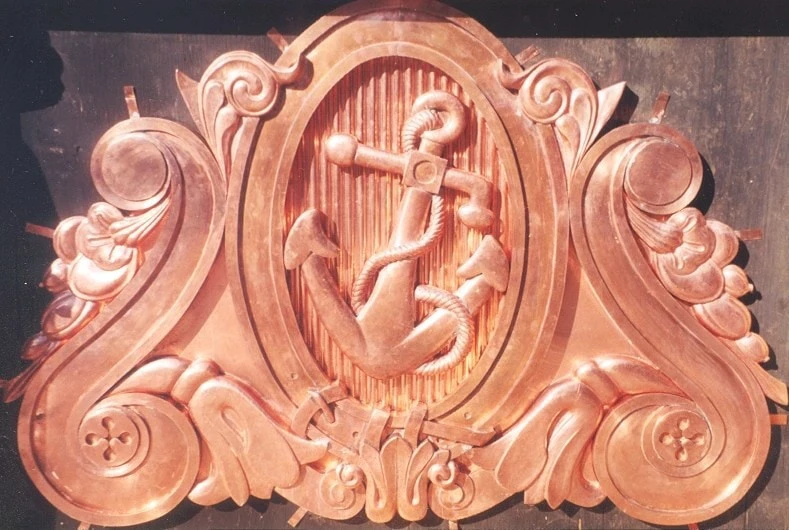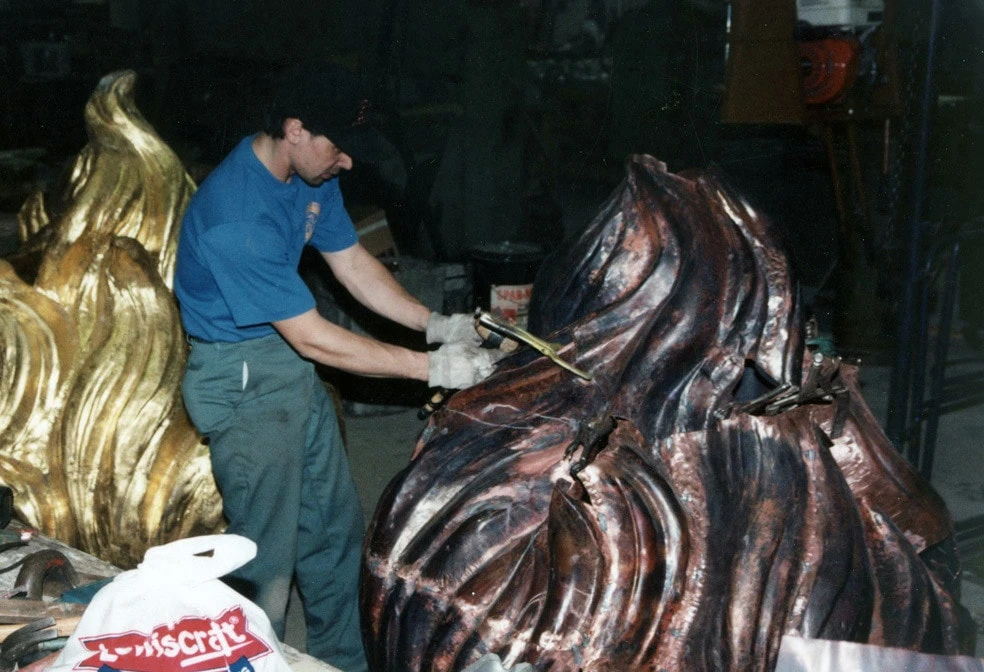Heather & Little are Canada's experts in historical architecture and ornamental preservation, with a reputation we've built for nearly a century. When people have a historical building or other architectural features which need to be restored to their original glory, they turn to us. Our work speaks for itself.
Our clients often wonder how we're able to so precisely match the look and feel of the structures we restore. We use every technique available, but one of the most common is the use of stamped sheet metal. Metal stamping is a simple process, allowing for the metal to be transformed into almost any shape or style.

How Stamped Sheet Metal Enables Architectural Restoration
Metal stamping is a common industrial process that can be applied to numerous fields, from architecture to product manufacturing. The core concept is simple: sending sheets of flat metal through a stamping press with a tool and die surface that creates specific shapes. In this way, we can recreate virtually any metal structure or surface.
Tool and Die Design
The process begins by creating a precise model of the tool and die set in a 3D CAD/CAM application. Whenever possible, we work off of detailed measurements and digital recordings taken from the actual piece to be recreated, to guarantee the final piece will be a perfect match for the original.
Depending on the situation, it may be designed as a single piece, or as multiple pieces designed to fit together. Once the final design is approved by our engineers, and our client, the metal stamping process begins.
Types Of Dies
The dies created for our metal stamping processes may be either singles-station or multi-station.
Single-station dies do all of the metal stamping in one place, although they may combine multiple processes into a single station. When a die performs both cutting and non-cutting functions, it's called a combination die. Or, if the die will do multiple cuts without other forming, it's a compound die.
Multi-station dies are designed when the piece is too complicated to be handled at a single station. The sheet metal is passed from one station to another, with each performing one or more transformations on the metal.
Typically, our dies are custom-made for each job, so that we can exactly recreate the pieces being restored.
The Core Processes of Metalworking
There are four key processes that make up the vast majority of all stamped sheet metal fabrication. These are:
The Three Types of Metal Stamping
Depending on the piece to be created, there are four potential metal stamping processes that may be chosen to fit your needs. These are:
Progressive Die Stamping
First, a metal strip is passed through a press and unrolled, then it is sent through two or more stamping stations. Each station performs a different function, such as piercing or bending, in an assembly-line style process where each function adds to the previous action. Progressive die stamping is excellent for components with complex geometry, where all the necessary transformations cannot be achieved by a single station.
Four-Slide Stamping
A newer technique, four-slide stamping allows four different tools to bend or form the sheet metal simultaneously. In some cases, this is more efficient than progressive die stamping or allows for transformations that would be inhibited by a multi-stage process. Extremely complicated designs can be achieved with four-slide stamping.
Deep Draw Stamping
Deep draw stamping is utilized when a piece needs to have a deep impression or indentation, without cutting all the way through the material. An oversized piece of metal is fed into a punching machine, which pushes and compresses the sheet in a single process. This allows for the creation of shapes and designs other metal stamping processes cannot achieve.
In general, our processes focus on unique or short-run stamping, as nearly every job we do is custom work intended to recreate specific elements of the piece or building being restored. We work to ensure every tool and die set, and stamping process is best suited to the work.

For Excellence in Architectural Restoration, Turn to Heather & Little
Founded in 1925, we have always focused on architectural restoration and building preservation services, making us true leaders in the field for nearly a century. Private citizens and cities across North America have turned to us for highly accurate building restorations, with pieces that are often indistinguishable from the originals - but while still adhering to any modern design standards and regulations which apply.
We are also available for custom-stamped sheet metal work of all types.
To learn more about our services and processes, or for a free consultation on a restoration project, please click here to contact us.
If you are looking for a second opinion on your project or have a particularly complex issue that needs a fresh eye, such as historic building restoration, we’re here to help. Tackling tricky restoration projects is our specialty, and we welcome the opportunity to provide consulting services. We apply a keen attention to detail to all our commissions.
Join our mailing list and keep up to date on what’s going on with Heather & Little, sheet metal and roofing, including access to industry insights, interesting project case studies and incentives.